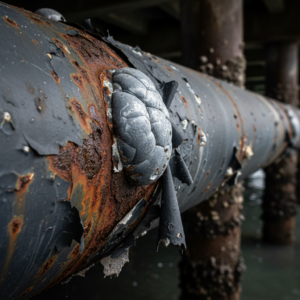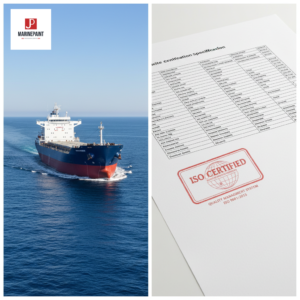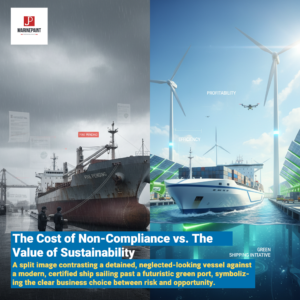Choosing the Best Marine Primer for Your Boat | A Guide
"I'm ready to paint my boat, but which primer do I actually need?" This common dilemma stops many boat owners in their tracks. The answer is simpler than you think.
The "best marine primer" isn't a single product; it is the right product for a specific job. Choosing the correct boat primer is a process of matching its properties to your boat's material (like fiberglass or aluminum), the condition of the surface, and its location—whether above or below the waterline 12. This guide is your practical roadmap. As a Technical Consultant at JDmarine, I'll walk you through selecting the correct marine paint primer for any substrate and provide a pre-priming checklist to guarantee a professional, long-lasting result that protects your investment.
![[Image Placeholder]A clean infographic with a central question [Image Placeholder]A clean infographic with a central question](https://jdmarinepaint.com/wp-content/uploads/2025/07/a-clean-infographic-with-a-central-question-which.png)
This practical guide is designed to make you the expert. We'll start with the most fundamental question to narrow down your choices instantly.
What Material is Your Boat Made Of, and Why Does It Matter So Much?
You know primer is important, but applying a wood primer to aluminum will cause it to peel off in sheets, while using a standard primer on fiberglass won't stop damaging osmosis 1. It's a costly mistake waiting to happen. The secret is simple: match the marine undercoat to the substrate. By starting with what your boat is made of, you can instantly narrow down your options and choose the correct foundation for a durable, professional paint job.
Choosing the best marine primer always begins by correctly identifying your boat’s hull material, as each substrate has unique chemical and physical properties that demand a specific priming strategy. For a better understanding of your vessel, consulting a guide on understanding boat hull construction can be invaluable.
Choosing the Best Marine Primer for Fiberglass (GRP)
Fiberglass is the most common boatbuilding material, but its gelcoat finish is not fully waterproof. Over time, water can slowly absorb through the gelcoat, leading to osmotic blisters—a serious and difficult-to-repair problem.
- Below the Waterline: Protection is non-negotiable. You need a two-part epoxy barrier coat. This type of boat primer cures into a hard, high-build, impermeable shield that prevents water absorption. We recommend our JDH816 Grey Epoxy Primer to create a robust osmosis barrier 34.
- Above the Waterline: Your options are more flexible. For maximum durability and a perfectly smooth base for a gloss topcoat, a two-part polyurethane primer is ideal. For easier application, a single-part primer can also be used.
Choosing the Best Marine Primer for Aluminum
Aluminum is strong and lightweight but presents two challenges: paint adhesion and corrosion. Aluminum quickly forms an oxide layer that prevents most paints from sticking, so a specialized approach is required 1.
- Etch Primer: First, you must apply an acid-based etch primer or etch wash. This chemically "bites" into the metal, creating a microscopic profile for the next coat to grip.
- Epoxy Primer: After etching, apply a high-build, anti-corrosive epoxy primer like our JDH835 Aluminum Iron Epoxy Anti-Rust Paint to build the protective barrier against corrosion 37.
Choosing the Best Marine Primer for Steel
For steel boats, the mission is singular: prevent rust. Steel primers are all about anti-corrosion.
- The best marine primers for steel are zinc-based, such as zinc-rich or zinc phosphate epoxies. The zinc in the primer provides "sacrificial protection." It is more reactive than steel, so it corrodes first, sacrificing itself to protect the steel hull. For this system to work, the surface must be sandblasted to a near-white metal finish (Sa2.5) 1723. Our JDH06-4 Epoxy Zinc-Rich Anti-Rust Primer is an excellent choice for this application 14.
Choosing the Best Marine Primer for Wood
Wood is a beautiful and traditional material, but it swells and shrinks with changes in moisture. A marine primer for wood must be flexible enough to move with it.
- Traditional alkyd (oil-based) primers like our JDC53-31 Red Lead Alkyd Anti-Rust Paint are excellent for priming wood above the waterline as they remain flexible and bond well 1417. Modern flexible epoxy primers are also a fantastic option, especially for sealing the grain completely. When priming wood, it's important to allow the first coat to soak in and seal the surface 2.
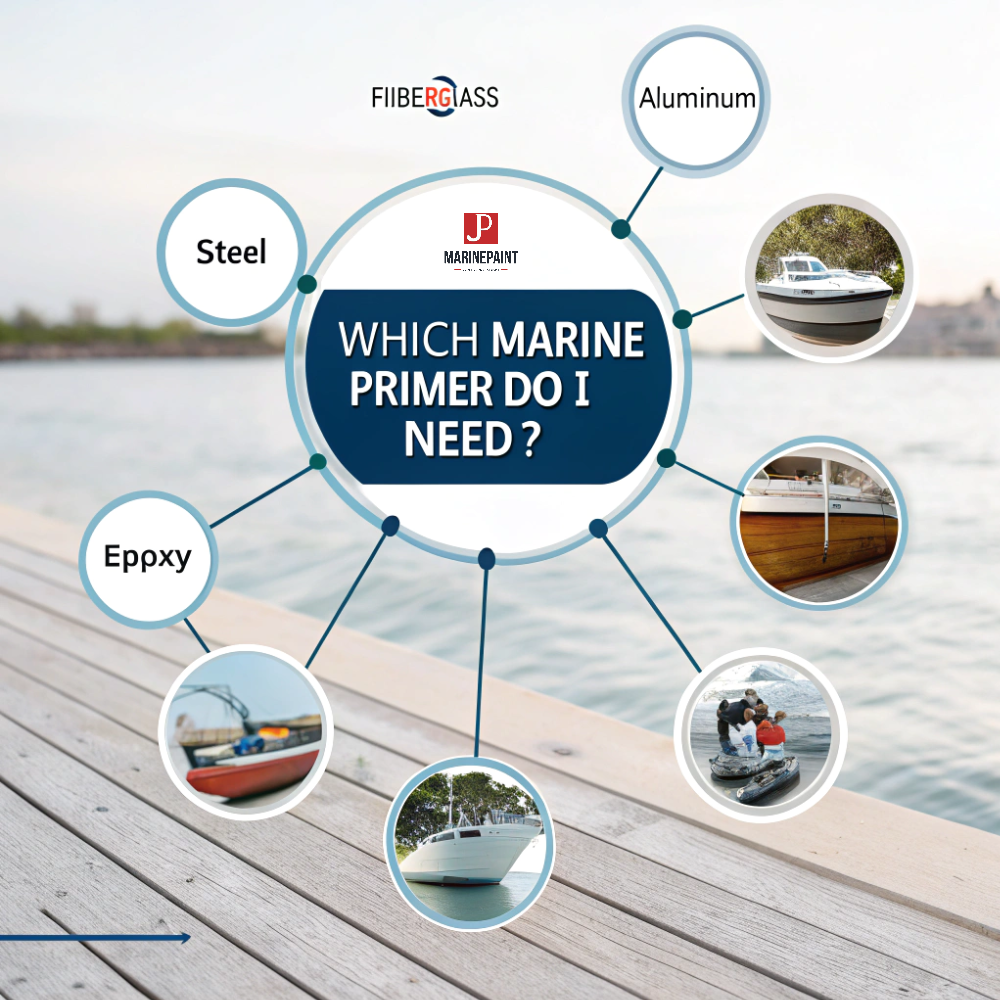
Why is Choosing a Primer Different for Above vs. Below the Waterline?
It’s tempting to think one can of primer can do it all. But using a topside primer below the waterline is a surefire way to get blisters and water damage, as it’s not designed for constant immersion. Conversely, a heavy-duty underwater primer might not sand as smoothly as needed for that perfect, glossy topside finish. Understanding that these two areas face entirely different enemies—constant water immersion vs. intense UV radiation—is the key to selecting the right marine undercoat for each location.
The conditions above and below the waterline are drastically different, demanding marine paint primers with distinct properties to ensure long-term protection and performance.
| Feature | Below the Waterline | Above the Waterline |
|---|---|---|
| Primary Goal | Create an impermeable waterproof barrier. | Achieve a smooth, UV-stable cosmetic finish. |
| Key Enemy | Constant water immersion, osmosis, marine growth. | Intense UV radiation, salt spray, dings, and scratches. |
| Ideal Primer Type | Two-Part Epoxy Barrier Coat | Polyurethane or High-Build Primers |
| Key Feature | Maximum water resistance and adhesion for antifouling paint. | Excellent sandability for a flawless finish; UV resistance 8. |
| JDmarine Product | JDH816 Grey Epoxy Primer 34 | Primers compatible with topcoats like JD918 Acrylic Polyurethane Hull Paint 828 |
Below the Waterline: The primer's single most important job is to be a waterproof barrier. Two-part epoxy primers dominate here because they cure to a hard, non-porous shield that stops water in its tracks. This not only prevents osmosis in fiberglass but also creates the ideal stable foundation for antifouling paint to adhere to, ensuring it doesn't peel or slough off prematurely 24.
Above the Waterline: For topsides, decks, and superstructures, the primer has a different role. Here, the enemies are UV rays from the sun and the desire for a perfect, mirror-like finish. Topside primers are formulated with UV inhibitors to prevent chalking and degradation. Critically, they are designed to be sanded to an ultra-smooth finish, which is the secret to achieving that professional, high-gloss look 819.
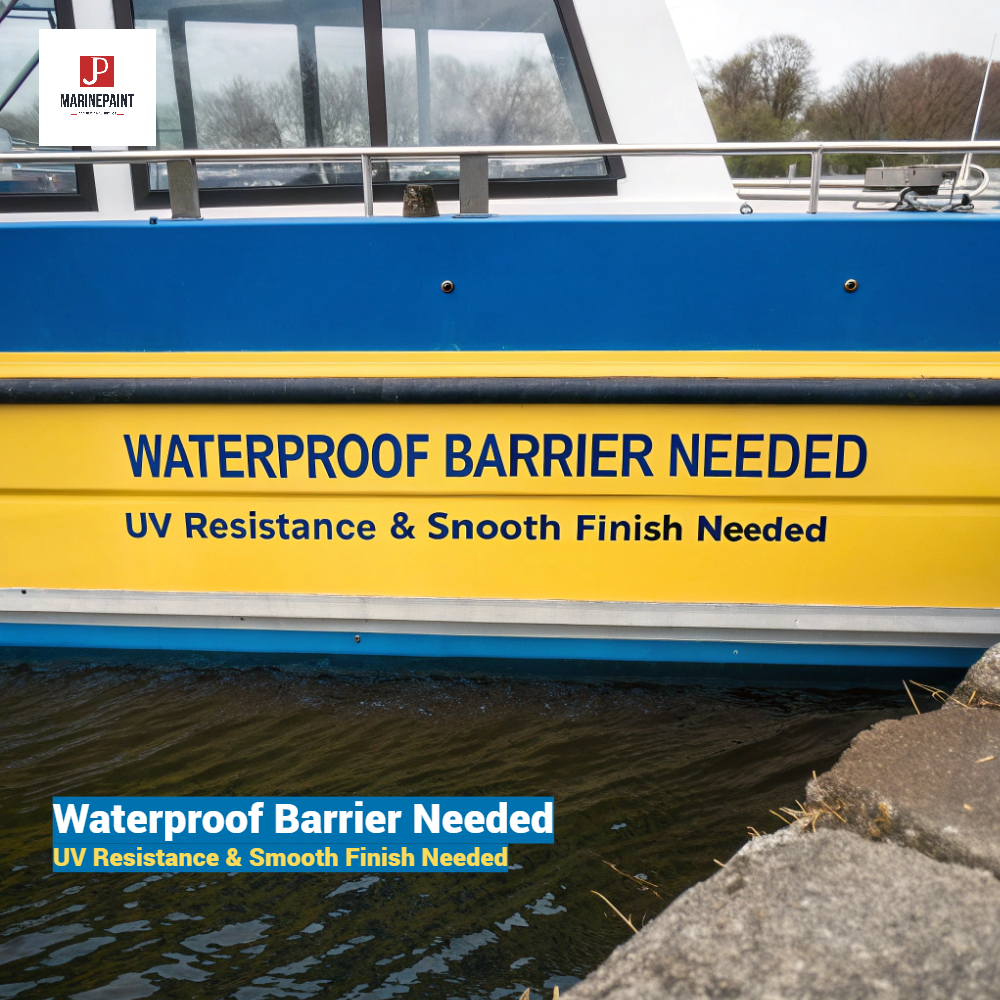
Is My Boat's Surface Truly Ready for Marine Primer?
You're eager to start painting, but the prep work feels like a tedious delay. Any residual wax, oil, or dust acts like a release agent, preventing the primer from bonding and leading to failure 130. Success is in the preparation. Following a methodical pre-priming checklist ensures the surface is perfectly prepared for maximum adhesion and is the single most important factor in achieving a durable, professional finish 1823.
To ensure your marine primer adheres perfectly and performs its job, the surface must be flawlessly prepared. Before you even open the can, go through this critical checklist.
- Inspection: Carefully check the entire hull for damage. Look for cracks, blisters on fiberglass, or areas of rust on steel that must be repaired before any priming begins 2.
- Cleaning & Degreasing: This is a chemical cleaning step. Use a high-quality marine solvent-based cleaner or degreaser to remove every trace of wax, oil, and other surface contaminants 1130.
- Removal of Old Paint: If the existing paint is peeling or blistering, it has failed and must be completely removed. If the old paint is still sound, you may be able to sand it and prime over it. Be aware that older boats may have been painted with lead-based paints; always follow the guidelines from the EPA on lead paint removal for safe handling.
- Sanding: This is the mechanical cleaning step. Sanding with 80-grit sandpaper creates a "mechanical profile"—a pattern of fine scratches that the new primer can physically lock into for a tenacious bond 2.
- Masking & Final Wipe: Mask off all areas not to be primed (waterline, thru-hulls, etc.). Just before painting, do a final wipe-down with a tack cloth to remove every speck of sanding dust.
- Safety First: Always use the correct personal protective equipment (PPE). This is especially critical with two-part primers and includes a properly fitted respirator, chemical-resistant gloves, and safety glasses 10.
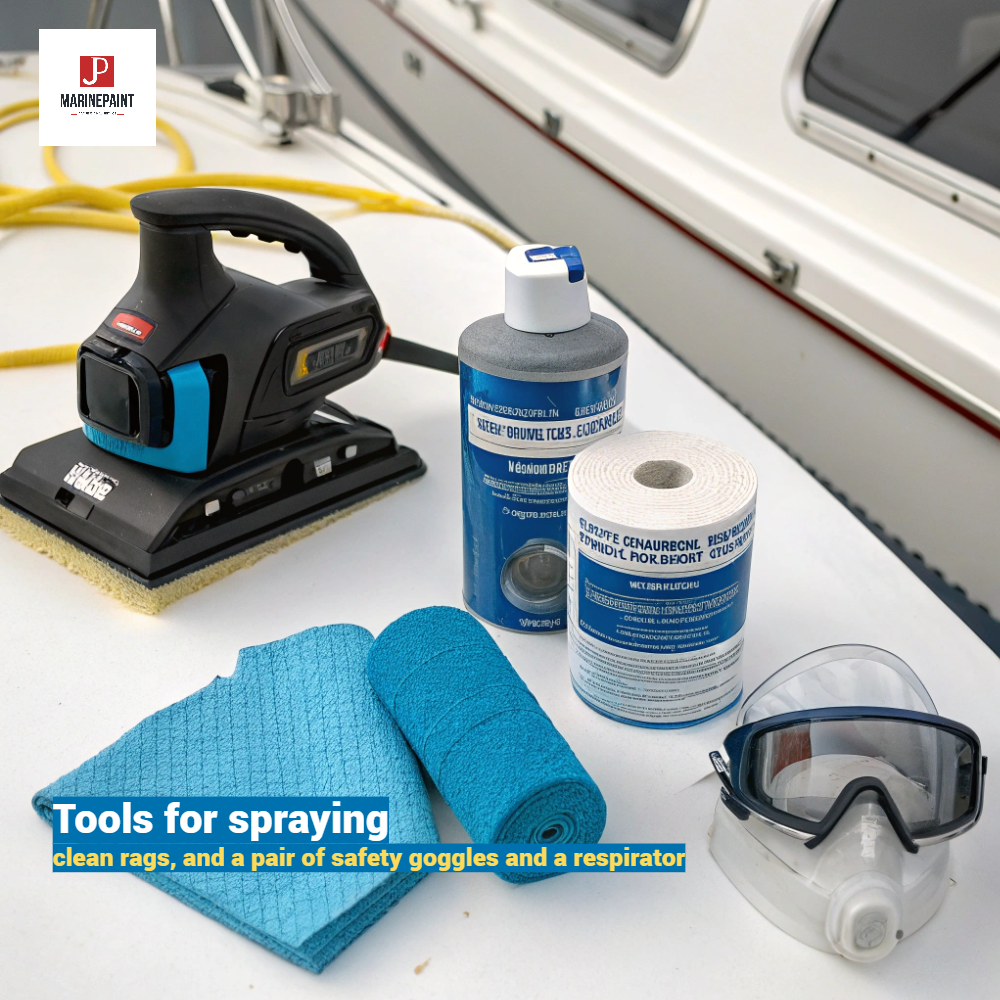
What is a Practical Guide to Applying Your Marine Primer?
You’ve done the prep, and now it's time to apply the foundation. How you apply the primer can be just as important as the prep work itself. There are three main methods, each with its pros and cons.
- Brush/Roller: This is the most accessible method for the DIY boater. For a smoother finish, use the "roll and tip" technique: one person applies the primer with a solvent-resistant foam roller, and a second person immediately follows behind with a high-quality brush, lightly dragging the tips of the bristles across the wet paint to smooth it out.
- Spray: This is the professional's choice for achieving the best, most uniform finish in the shortest amount of time. It requires more equipment, such as an HVLP (High Volume, Low Pressure) sprayer, and more skill to avoid runs and drips. Spraying often requires the primer to be thinned according to the manufacturer's directions 5.
FAQs: What Are Your Top Marine Primer Selection Questions?
What is the best primer for a fiberglass boat?
For the best protection, especially below the waterline, a two-part epoxy primer is the top choice. It creates an impermeable barrier coat that is essential for preventing osmotic blistering in the gelcoat 1.
Do I need a special primer for aluminum?
Yes, absolutely. Standard primers will not adhere to aluminum. You must use a two-step system: first, an acid-based etch primer to bite into the metal, followed by a high-build epoxy barrier coat primer for corrosion protection 1.
Can I use a one-part primer under a two-part topcoat?
This is generally not recommended. The powerful solvents in two-part polyurethane or epoxy topcoats can attack, lift, or wrinkle a softer one-part primer underneath, causing a catastrophic failure of the entire system.
What is a barrier coat?
A barrier coat is a specific application of a high-build, two-part epoxy primer. It involves applying multiple coats (often 4-6) to build a thick, impermeable membrane over a fiberglass hull. Its primary purpose is to provide the most robust protection against water absorption and prevent osmosis.
How do I prime a previously painted boat?
If the old paint is in good, sound condition, the key is thorough preparation. You must sand the entire surface (e.g., with 220-grit paper) to remove all gloss, then clean it thoroughly. If the old paint is peeling or failing, it must be completely removed down to the original substrate before priming 1.
Conclusion
Choosing and using the best marine primer is no longer a mystery. It's a methodical process of matching the right product to your boat's specific material and needs.
With this guide, you're ready to choose with confidence and give your boat the solid foundation it deserves for a long-lasting, professional finish.
![]()


